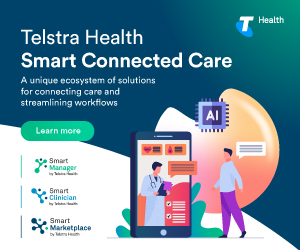6 Tips for designing a patient-centric medical practice
In the age of proactive wellness and patient-centric care, we now have a deeper understanding of how a patient’s environment can contribute to healing and improved recovery time. So why are patients still experiencing noisy, sterile waiting areas scattered with well-thumped magazines and cramped, cluttered consult rooms?
In this article, GP and MedicalDirector’s Chief Clinical Advisor, Dr Charlotte Middleton, reveals six key design and layout tips that can enhance patient experience, improve health outcomes and promote continuity of care.
1. Create a human-centric space
A recent report released by KPMG, Healthcare reimagined: Innovation trends, predictions and actions for healthcare leaders, revealed ‘proactive wellness’, which involves implementing solutions to help improve individuals’ health over time, needs to be supported by greater adoption of multidisciplinary design when designing healthcare facilities.
One of this report’s key recommendations is to implement human-centric change, which involves designing the practice with a focus on patient empathy. This can be achieved for instance, with simple considerations like widening the bathroom doors, or creating family and friend pods in the waiting room instead of rows of chairs. All of these can make a big impact to both the patient’s first impressions of your practice and overall experience.
2. Add life, aesthetics and a personal touch
Further to above, according to the KPMG report, incorporating art, indoor gardens, landscapes and water features in a clinical environment can really help reduce the stress of patients and their families. Plants can really enliven both the waiting room and consult room, and create an inviting, friendly space.
You can even give your consult room or practice area a personal touch by hanging artworks or drawings created by your patients on the wall. Positive thinking posters can also make a resonating impact with patients, with messages such as ‘you’re stronger that you think you are’ or ‘be the change you want to be.’ All these little elements, over time, can make a big different to patient morale, engagement and experience.
3. Support prevention of pathogen transmission
Interestingly, the report also stresses how design and layout can ensure hygiene, and minimise the spread of viruses, microbes and bacteria. Practices can start applying out of the box solutions to prevent pathogen transmission, in order to support a more hygienic clinical environment that better supports patient care.
For instance, one of the most largely ignored areas of clinics is door handle design. Replacing pull door handles with push plates on doors can reduce microbial transmission by 50%. This design element used in hospitals can work just as effectively in general practice.
4. Acoustics and ambience that don’t aggravate
No patient wants to be waiting in a noisy, stressful waiting area. The report recommends reducing noise sources, such as improving sound-proofing with sound-absorbing ceilings and carpeting, coupled with selecting music and sounds that act as positive verbal cues from your environment.
Try focusing on creating an overall calm ambience, so instead of having big loud televisions in your waiting area, have screens showing more calming scenes of rivers, oceans or forests. The key here is to focus on creating an environment that is calming and reduces anxiety, not a space that aggravates your patients.
5. Don’t forget the power of lighting
It’s incredible how much of an impact lighting has on us both physically and psychologically. The KPMG report further stressed how smart use of light within a health facility can be used to benefit patients. Lighting can impact our circadian rhythm, help normalise rest-activity cycles, sleep patterns, mood and pain, while also influencing our immune system and potential for healing. Research has even shown this may help promote tissue recovery and enhance patient ability to handle microbial threats.
6. Minimalist design and a tech-enabled ‘smart’ space
One of the simple ways to offer a more inviting, patient-centric design and layout is to simply remove big, huge desks in your consult room. Big desks physically ‘divide’ the space between you and your patient, so by removing it, you’re immediately evoking a more patient friendly space.
There are also some smart ways to can use technology to better engage with your patient. Try installing a TV screen up on the wall to perhaps show something you’re doing, discuss your patient’s results or share patient education resources. You can also give your patients a clean, minimalist experience in the waiting room, from having an easy self check-in kiosk, to reminders and recalls on the phone.
Ultimately, enhancing the patient experience is not just about improving the consult, but about finding ways to better support the entire patient journey. And if we’re mindful about enhancing all the various touch points across the patient journey, we will be able to be more empowered to support better continuity of care and improve health outcomes now and in the future.
To find out more, download our free ebook: ‘The Smart Guide to Starting a Medical Practice.’









